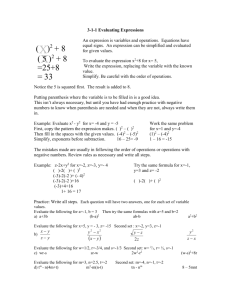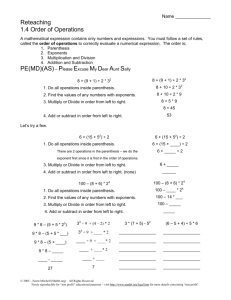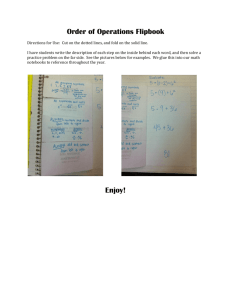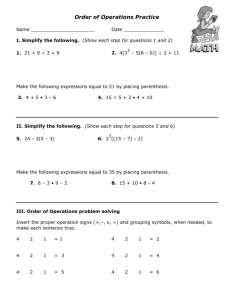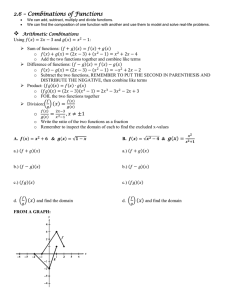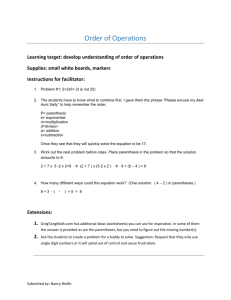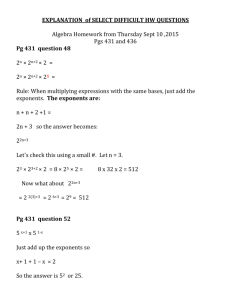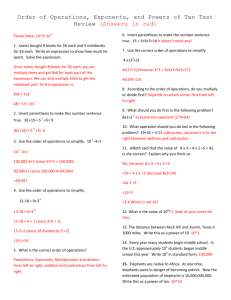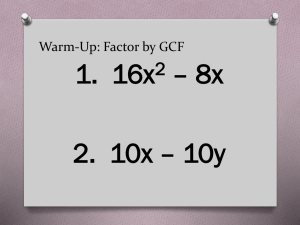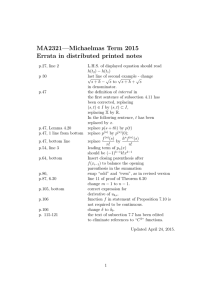English
advertisement
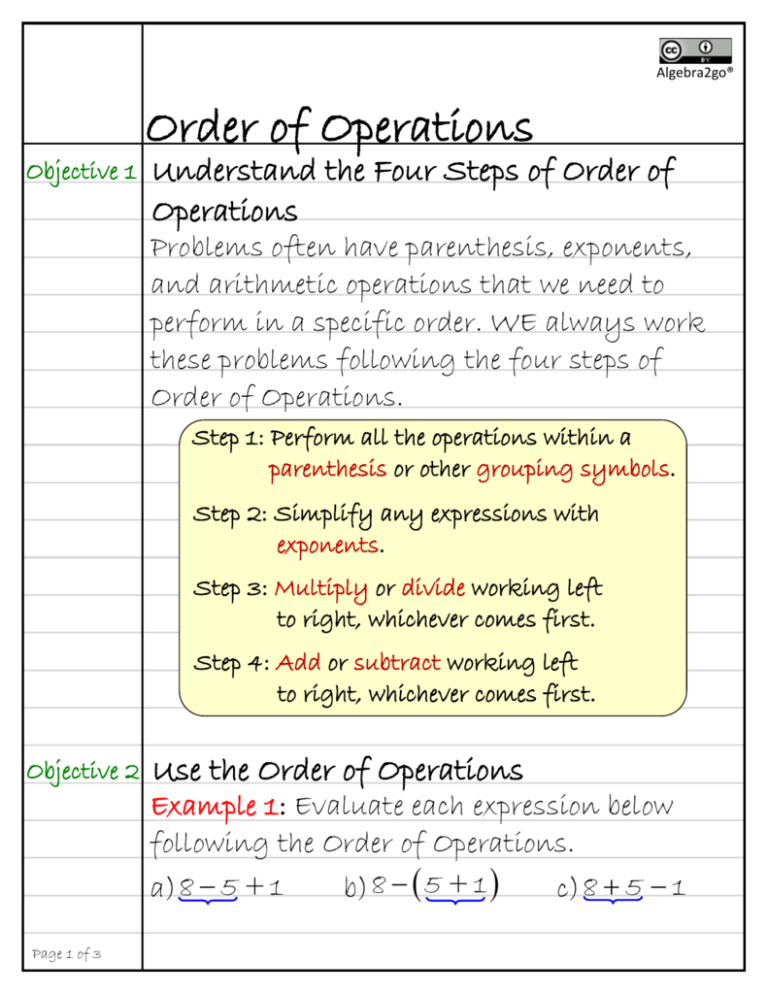
Algebra2go® Objective 1 Order of Operations Understand the Four Steps of Order of Operations Problems often have parenthesis, exponents, and arithmetic operations that we need to perform in a specific order. WE always work these problems following the four steps of Order of Operations. Step 1: Perform all the operations within a parenthesis or other grouping symbols. Step 2: Simplify any expressions with exponents. Step 3: Multiply or divide working left to right, whichever comes first. Step 4: Add or subtract working left to right, whichever comes first. Objective 2 Page 1 of 3 Use the Order of Operations Example 1: Evaluate each expression below following the Order of Operations. a) 8 − 5 + 1 b) 8 − ( 5 + 1 ) c) 8 + 5 − 1 Algebra2go® Example 2: Evaluate each expression. 10 2 3 2 − − 6 4 3 ( ) a) 3 − 5 ÷ 5 b) Example 3: Evaluate. 7 2 − ( 42 − 5 ) − 6 + 10 Page 2 of 3 Algebra2go® Objective 3 Understand when Parenthesis are needed to define a negative Base. 2 When evaluating the expression -3 , we must pay close attention to what the base is. In the 2 expression -3 , the base is positive 3. This is 2 2 because -3 = -1 ⋅ 3 . Note: -32 is said “Negative one times three squared”. To correctly evaluate -32 , we must follow the Order of Operations and evaluate the exponent before we multiply by -1. Note: 2 2 9 9 -3 = -1 ⋅ 3 = -1 ⋅ = - Negative x Positive =Negative If the base is to be -3 , then parenthesis must be used to indicate this. 2 ( -3 ) = ( -3 )( -3 ) = 9 Answer the following homework questions. In Exercises 1 – 9, evaluate each expression. 1) 42 − ( 13 − 10 ) Page 3 of 3 2 -5 4) 3 − 2 2 ÷ 4 ⋅ 2 7) 2) 3 + 4 17 − 2 ( 5 − 1 ) 5) 2 3 + 33 ÷ 9 − 2 8) ( -8 ) 3) 5 36 ÷ 2 ( 5 2 − 42 ) 6) 48 ÷ 2 3 ⋅ 9 − 2 3 9) 2 2 -12 0
